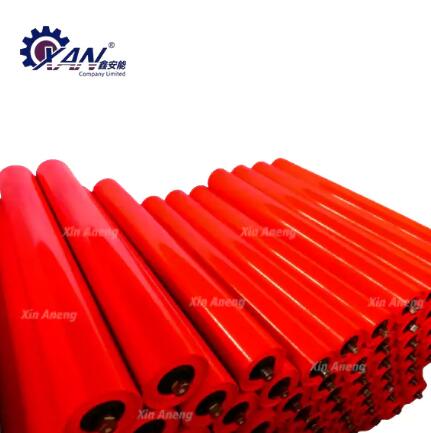How to Choose the Right Return Idler Roller for Your Conveyor System
2024-09-02
Selecting the right components for your conveyor system is crucial for ensuring efficient operation and minimizing downtime. Among these components, the return idler roller plays a vital role in maintaining the belt’s alignment and reducing wear. However, not all return idler rollers are created equal. In this blog, we’ll explore the key factors to consider when choosing the right return idler roller for your conveyor system, ensuring optimal performance and longevity.
Understanding Your Conveyor System Needs
Before diving into the specifics of return idler rollers, it’s important to understand the needs of your conveyor system. Factors such as the type of material being transported, the length and speed of the conveyor, and the environmental conditions all play a role in determining the best roller for your application.
1. Material Characteristics: The type of material your conveyor transports will influence the choice of return idler roller. For instance, abrasive or sticky materials may require rollers with special coatings or self-cleaning features to prevent buildup and reduce wear.
2. Conveyor Length and Speed: Longer conveyors and those operating at higher speeds generate more friction and stress on the return rollers. In such cases, rollers with higher load-bearing capacities and smoother surfaces are ideal to minimize wear and energy consumption.
3. Environmental Conditions: If your conveyor operates in harsh environments, such as those with extreme temperatures, moisture, or corrosive substances, you’ll need to select return idler rollers made from materials that can withstand these conditions. For example, stainless steel or coated rollers may be necessary in corrosive environments.
Types of Return Idler Rollers and Their Applications
Choosing the right type of return idler roller is essential for matching the specific needs of your conveyor system. Here are some common types and their best use cases:
1. Flat Return Rollers: Best suited for flat belt conveyors, these are the most basic type of return idler roller. They provide simple, effective support for the returning belt and are ideal for general-purpose applications.
2. V-Return Rollers: Designed to provide additional support to the belt by maintaining its shape, V-return rollers are typically used in systems where the belt carries bulkier or uneven loads. They help prevent the belt from sagging and reduce the risk of material spillage.
3. Rubber Disc Return Rollers: Ideal for applications involving sticky or abrasive materials, these rollers feature rubber discs that prevent material buildup on the roller surface. This design reduces maintenance needs and prolongs the life of the roller and belt.
4. Self-Cleaning Return Rollers: For environments where material spillage or carryback is a concern, self-cleaning rollers are a great choice. They automatically remove debris from the roller surface, ensuring smooth operation and reducing the need for manual cleaning.
5. Impact Return Rollers: In heavy-duty applications where the conveyor belt is subjected to significant impacts, such as in mining or quarrying, impact return rollers provide the necessary support. They are designed to absorb and distribute the impact, reducing damage to the belt and other components.
Key Considerations for Selection
When selecting return idler rollers, consider the following factors to ensure you choose the best option for your conveyor system:
1. Load Capacity: Ensure the return idler roller can handle the load of the returning belt, including the weight of any material that may not have been fully discharged. Overloading rollers can lead to premature failure.
2. Material and Coating: Depending on your operating environment, choose rollers made from materials that offer the necessary durability and resistance to corrosion, abrasion, or chemical exposure. Coatings such as polyurethane or rubber can provide additional protection and extend roller life.
3. Maintenance Requirements: Consider the maintenance needs of the roller. Self-cleaning rollers can reduce the need for manual cleaning, while rollers with sealed bearings may require less frequent lubrication.
4. Compatibility with Existing System: Ensure the return idler rollers you select are compatible with your existing conveyor system in terms of size, mounting, and design. This will help avoid costly modifications or replacements.
5. Cost vs. Longevity: While it may be tempting to choose the cheapest option, investing in high-quality return idler rollers can save you money in the long run by reducing maintenance costs, minimizing downtime, and extending the lifespan of your conveyor system.
Conclusion
Choosing the right return idler roller for your conveyor system is a critical decision that can significantly impact your operation’s efficiency and cost-effectiveness. By considering factors such as material characteristics, environmental conditions, and specific application needs, you can select a roller that not only meets your current requirements but also contributes to the long-term success of your material handling processes. Investing in the right return idler roller is an investment in the reliability and longevity of your conveyor system.


